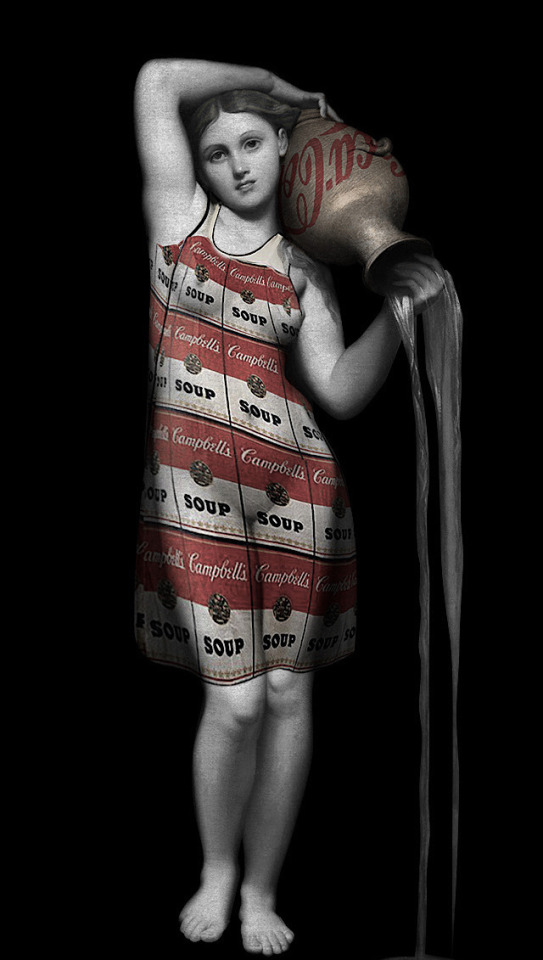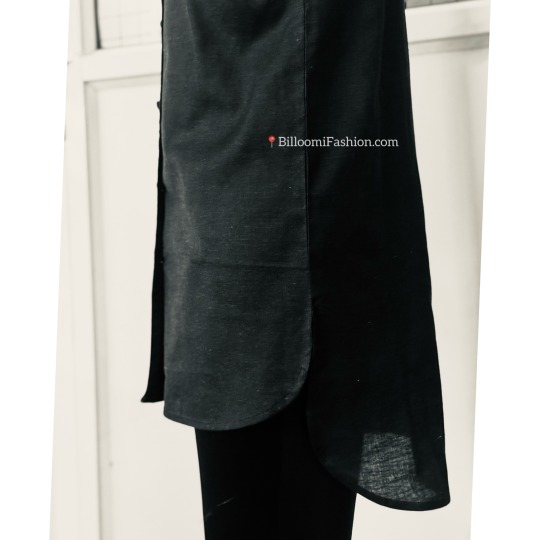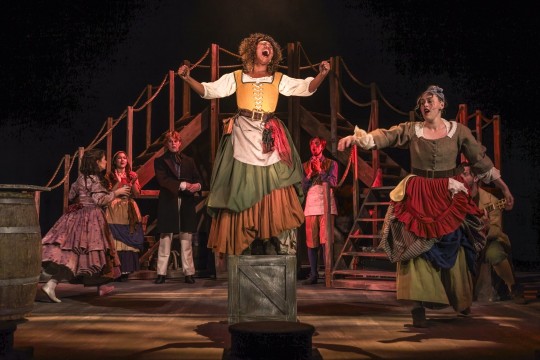#garment sourcing
Text

The making of #womenswear Dress at #billoomifashion Using #handblockprinted #cottonfabric
———————————
.
.
.
.
.
.
.
.
.
.
.
.
#womensclothing #womensfashion #womenscottondress #blockprintedfabric #bohemienstyle #bohochicstyle #garmentconstruction #sustainablefashion #sustainableclothing #smallbatchclothing #lowmoq #smallquantityproduction #ethicalclothing #ethicalclothing #ethicalclothingaustralia #ethicallymadeclothing #ethicalclothingfactory #ruffleandfrills #ruffledresses #tieanddyedress #fashionblogger #nyfwstreetstyle #ciffcopenhagen #purelondon #purelondonshow #stylemaxchicago #lifeinstylemelbourne
#custom clothing#smallbatchclothing#private label clothing#womens clothing#privatelabel#kidsfashion#garment sourcing#childrenswear#billoomi fashion india#billoomifashion
0 notes
Link
Since the beginning, we've tried to keep our production levels as high as possible. We have a long history as a clothes manufacturer in italy, and we continue to expand every day.
0 notes
Text

La Source's Garment: Antinomies
Will be available for free in 1.5
29 notes
·
View notes
Text
It’s so crazy to me that my interest in vintage and historical fashion began with a 1950s/60s obsession where that was the only thing I was interested in and tried to emulate in my own wardrobe and now I dress like a Victorian woman 75% of the time and have ZERO desire to wear almost anything 50s style. 1950s fashion is so well documented in a way that is easily accessible to the layperson (read: me at 15 years old using google and Pinterest) and so easy to emulate with contemporary clothing because it’s sort of the last time we had any seriously radical changes to the basic garments we wear (the silhouette textures accessories vary over time but we’re currently in an era of dress that is still visually related to the styles that became western staples post WWII). Which is why it’s so broadly appealing and accessible. And I really think that for those exact reasons it’s a gateway fashion era for so many people whether they like vintage styles or even more historical than that. It’s the most accessible way to dip your toes in the pond of sartorial anachronism. Once you experiment that little bit and find confidence you find community and resources and it leads to finding other styles that you experiment further with and from there the possibilities are endless, once you decide that THAT is what feels the most you. It’s like, if you dress like this as an adult then you almost certainly either started off with like rockabilly or steampunk as an awkward teen and the biggest deciding factor was like how gay and mentally ill you were and what your local Hot Topic had in stock.
#I flirted with steampunk but it was a further departure from any contemporary wardrobe staples#and I was limited to clothing my mother was willing to buy me#so 1950s was the easiest way to play with anachronism in my wardrobe#and now I have access to primary sources and have taught myself how to sew historical garments so I have become a Victorian woman#dress history#fashion history#this has been a thought#the pond of sartorial anachronism is my new favorite concept btw
9 notes
·
View notes
Note
when and why'd everybody switch from corsets to bras? (I don't got tits so you might have to explain things from a fairly basic level.)
well okay so i’m not a garment historian but:
Relevant Background:
I’m not sure what kind of garment you think of a corset as? If you’re thinking of something very stiff and restrictive, then you’re thinking of something that was never everyday wear for working women (ie the majority of women) anyway, although towards the end of the corsetry era with the development of cheaper production methods and plastic boning a working class woman with a decent job might’ve owned one to wear on Sundays. Working women did wear supporting garments that were corsetlike in structure (sometimes called stays, although the terminology isn’t strictly differentiated) and these were quite practical to do physical tasks in so long as you had the knack of moving in them.*
Tightlacing (the use of corsets to achieve significant reduction in waist size over time) was always a fad restricted to a small number of trendy rich women and was condemned by medical and moral authorities at the time. Fashion corsets for richer women still might achieve a fair few inches waist reduction, but:
the primary purpose of foundation garments such as corsets was never waist/size reduction, it was about achieving whatever was the fashionable silhouette or shape (while keeping everything ‘supported’, including the breasts). Early off-the-rack clothing for women was developed in the corset/stays era, and the notion of taking a single shape and sizing it up and down makes way more sense when you imagine it in the context of the expectation that everyone is being foundation-garmented into the same vague shape!
average/ common-to-have breast sizes in European women (both absolute volume, and breast size relative to torso diameter (which is what bra ‘cup sizes’ measure) have increased significantly since the early 20th century.
So,
When?
Between the 1920s and 1960s.
This is the era when the bra first appears, initially just as an innovation in the design of foundation garments, which have always changed in form frequently anyway - with new developments in terms of available fabrics, shaping technology and closures, and of course for reasons of fashion (which are sometimes downstream of the above, new things often being popular with designers and trendsetters).
The new corset/stays is a two-piece made up of the new brassiere and a sort of underbust stays called a girdle, but traditional corsets remain in use for some purposes - they’re still popular in bridal wear for instance.
The brassiere in this era features various innovations in garment technology such as underwiring (a variation on metal corset boning that achieves slightly different things in terms of torso shape (and feel/weight distribution, but not in an ‘unambiguous improvement’ way)) and elasticated fabric (developed around the turn of the century, and a structural necessity for bralike objects).
Why?
well as usual in history, lots of reasons. A big factor was World War I, but not in the way people like to think.
There’s a sort of revisionist history about corsets. Many 20th century feminists (lacking in knowledge for a combination of culpable and non-culpable reasons, and doing that very common thing of taking rich women’s historical experiences as universal and primary source scaremongering as accurate reportage) liked to think of them as Tools Of Oppression. Pop culture - funded by advertisers who wanted to sell their newer clothing styles, and tbh ever-ready to imagine women as vain and useless and not having contributed anything to society until five minutes ago - was ready to back them up, and following this you get a lot of accounts that say the wearing of corsets was primarily ended by women’s liberation, which WW1 contributed to because it was the First Time Ever that women had jobs, which of course you can’t do in a corset. That’s an extraordinarily blinkered, middle/upper class view of who ‘women’ are! But upper/middle class women set the narrative, and their upper/middle class mothers and grandmothers wore very different and more restrictive garments than the majority of women, who have always been expected to work. However this narrative - and the fact that working did get middle/upper class trendsetters out of their restrictive garments (but not into the garments worn by working class women bc that Just Wouldn’t Do) - did contribute to the corset going away and not coming back.**
Moreover, WW1 helped kill the corset for 2 reasons:
during the war, the stuff to make corsets with was rationed/needed for other stuff to a greater extent than the stuff for bras, which use a lot less fabric.
after the war, which meant fabric shortages and rationing, a new look developed which allowed the rich (trendsetters) to demonstrate their wealth by being very loose and flowy. It lacked a defined silhouette that would have required traditional shapewear, so helped to cement the corset’s exit from the market. (This look was also highly feminine, and that was definitely a cultural factor in its popularity at this time.)
When people stopped wearing corsets, they stopped making comfortable corsets or innovating in practical ways in the design of corsets using modern fabrics and taking into account modern body shapes (as people have done with bras), so people are unlikely to find them more comfortable and be tempted to go back to them. We also stopped wearing so many layers of clothes all the time in general because of central heating, and (especially casual) clothing in the modern era has in general remained - for men and women - less fitted than it was in the past.
#*variously sourced but most interestingly to me this has been demonstrated by living history experts#**the girdle is still going strong however! it’s made of more high tech fabrics now and called shapewear or waist cinchers#garment history#weigh in if you know more than me#this is very incomplete there are whole books on this
65 notes
·
View notes
Text
Les Mis 1.2.2
Following up from Pilf’s post, because clothing is the topic I have stuff to say about. [Also the rest of the action feels very natural follow ups from the previous 15 chapters: the people and house we met in 1.1.1-14 are about to encounter the guy having an awful day in 1.2.1, and this is Hugo’s set up for that.]
Caveat: my main research area is the mid-19th century (right around the time Hugo was finishing Les Mis, not the years it is set), and my working language is English. The US in 1860 is not France in 1815-1832, but I think some elements here do transfer over, or at least offer insight into how Hugo’s readers might have interpreted the text.
Main observations re: Baptistine Myriel’s clothing:
9 years is a very long time for a dress in active use. Washing and non-washing dresses will have different trajectories, but in contemporary non-fiction, making a silk dress last 7 years is a feat of clever planning and care. Five years is noteworthy. One to two years is more typical, and 3 months isn’t necessarily a frivolous waste (wearing a silk dress only once would be). Much like with the soup thing, the Myriel household is taking ‘practicing good economy’ to an extreme, almost absurd degree.
Also, the fact that Mlle Baptistine is still wearing her silk dress “in the style of 1806″ in 1815 is notably weird. Fiction and non-fiction sources of the 1850s/60s show economically-minded women remodeling their silks every season in order to keep up to date. Magazine articles give instructions for turning last year’s flounced skirts into gored ones, or adding puffed overskirts to update narrow gored skirts. Advice books recommend getting an extra yard or two of fabric so that you can update the sleeves of your dress when it’s taken apart for washing. Trousseaus should have some of the dresses left “unmade” (as lengths of fabrics) in case fashions change over the year. A missionary woman writing from not-yet-Seattle in the mid-1850s opines that the dresses she made for her wedding less than a year earlier are too “rusty” to be worn at home (in New York) but are sufficient for living in the woods.
So my impression of Baptistine is that she’s meant to be The Superlatively Economical gentlewoman, and also Not At All Vain About Clothes. She’s not spending her time or money on fashion, but the fact that she is still bothering to wear a silk gown for dinner is signalling that she’s still performing (her class’s) respectability. From this, and her letter about re-doing her room, I expect that her whole wardrobe and all the house’s domestic interiors are scrupulously clean and mended, but also old and likely inharmonious. The two women will do the work to live respectably, but will not spend any unnecessary money on their own comfort or aesthetics.
Hugo taking the trouble to describe Baptistine’s dress (”short waist, a narrow, sheath-like skirt, puffed sleeves, with flaps and buttons”) just reminds me of how much crinoline-era Victorians do not like the Neoclassical look. All of these specific elements are basically the opposite of early 1860s fashion--waists are worn just at/above the natural waist, skirts are about as wide as they can get, more fitted coat sleeves are replacing the wide-open sleeves of the late 1850s. It’s a bit different from how most modern folks seem to view the 1810s style (Austen! Romance! Bridgerton?): I’ll need to dig through my notes, but there’s at least one 1850/60s cartoon and one article I recall which amount to ‘yikes, the fashions of 50 years ago were awful’, and another article from the late 1860s which holds that the crinoline is a great improvement on the raised-waistline silhouette. I think we all prefer to ignore the weirdness of the c.1865-9 Second Empire style, but there were absolutely pairing high waistlines with fitted sleeves and trained skirts over elliptical or half-hoops (transitioning from the rounder cages of the late 1850s and early 1860s into the bustles of the early 1870s).
#Les Miserables#1.2.2#les mis letters#overthinking it#I have a long-running research project on just how long people expected clothing to last in the period 1855-1865#it's pretty fragmentary still#but the 1870s-1890s sources will give you exact timetables of what you should buy and when to maintain a ladylike wardrobe on a budget#most run a 3-year cycle in which you buy the highest quality fabric you can#remake your old best garments to be your next year's second-best#and rotate items seasonally#even so you're looking at a quality winter coat is used three years as the longest-lived garment#bonnets get retrimmed for each season and put away when the weather turns#dresses do one or two seasons before you put them away then get refreshed when they're agian in season and discarded or remade after that
47 notes
·
View notes
Photo

eucanthos
_
Jean Auguste Dominique Ingres: La Source, 1856 - musées d'Orsay
Andy Warhol: The Souper Dress, 1966–67 - TheMet
Ai Weiwei: Coca-Cola Vase (1994). Courtesy of Mary Boone Gallery, New York
img "refreshed” 15 Mar 23
https://www.musee-orsay.fr/en/artworks/la-source-525
https://www.metmuseum.org/art/collection/search/79778
https://time.com/3453232/ai-weiwei-art/
#eucanthos#collage#Ingres#Andy Warhol#appropriation#the source#water#pop#consumerism#garment#parody#Ai Weiwei
178 notes
·
View notes
Text
Christian websites: here is a detailed description of how to go to confessional and what to say in confessional. we’re providing this to help people confess their sins and be forgiven by god
me: thank you this is very helpful information for writing gay porn
#honestly christian customs have been one of the easiest things I’ve had to research#bc christians LOVE to tell you all about Christianity#for most things I’ve ended up w like. blogs or pop science articles#but for this I can have The Church (tm) tell me all the details I need. primary fucking sources#i will say writing a sex scene w a guy in full catholic priest garments is not the easiest but not for lack of research material
8 notes
·
View notes
Text
video called "pirate shirt tutorial that actually makes sense" with a thumbnail clickbaitingly copying bernadette banner's style, which does the exact same thing as bernadette banner's video but more confusingly and without a diagram in the video itself, also failing to understand that bernadette banner's channel is primarily a history channel and not a sewing tutorial channel so telling people they don't have to hand-sew the pirate shirt or they don't have to thread-pull is unnecessary because bernadette banner literally said "do this however you want, i just do it this way because it's how i learn about historical dress practices" in her own video. couldn't ask for better youtube entertainment
#source: i'm an idiot and i've made two of bernadette's pirate shirts and they're fantastic#understanding that her diagram is not a pattern but a guideline on how to make your own pattern#is like. not that hard to get. she gave her measurements and then explained how to get your own#to be fair!! everyone learns differently! there are many comments saying that this other video made sense and helped them#which is absolutely fair and good. more knowledge is never a bad thing#it's just the presentation of this other video that i find so funny#'yes i CAN explain how to make a historically accurate men's shirt better than the actual historical dress historian'#[footage not found]#just the way of explaining the shoulder seams...........so much more confusing than bernadette's diagram#also calling the reinforcement patches on the neck/cuff splits??? useless/pointless??????#sorry i want my garments to not fall apart because i can't afford really nice fabric lmao i will be reinforcing those points. thanks tho#also 'no one is talking about neck gussets i couldn't find any info' HUH ???#i just want to know if they looked anywhere besides youtube because there are absolutely people talking abt neck gussets#i should not be such a bitch about this. it's not that big a deal. again in the end: more people sharing knowledge is Good#but my friend!!! come on now!!!!#aster chat#ah fuck lads i want to make another poet shirt because that's exactly what i need going into what i'm sure will be a blazing summer#another long sleeved shirt with three yards of fabric to smother myself in#that do Not go with any of my work appropriate trousers
4 notes
·
View notes
Text

Manufacturing of #womenswear #longlengthshirts at #billoomifashion in #cotton
———————————
.
.
.
.
.
.
.
.
.
.
.
.
#womensclothing #womensfashion #womenscottondress #bohemienstyle #bohochicstyle #garmentconstruction #sustainablefashion #sustainableclothing #sustainabledesign #sustainablefashionblogger #smallbatchclothing #lowmoq #smallquantityproduction #ethicalclothing #ethicalclothing #ethicalclothingaustralia #clothingdesigner #fashiondesign #bohochic #bohofashion #bohemiandress #bohoclothing #wwdmagic #designedinusa #womenslongshirt
#custom clothing#smallbatchclothing#private label clothing#womens clothing#privatelabel#kidsfashion#garment sourcing#childrenswear#billoomi fashion india#billoomifashion
0 notes
Link
We are a full-service Apparel Sourcing Company situated in Italy that specializes in matching customers with high-quality, cost-effective, and trustworthy manufacturers.
1 note
·
View note
Text
lil costumes related rant - sorry to all of u who have no idea what im talking abt
now... why the FUCK... would someone put a fabric swatch in my show bible... but not put any information on the sourcing with it... WHY ???
do u not realize that we are in the fuxking Garment District???? I could throw my boot out the window right now and hit 5 different fabric shops, but i'm just supposed to GUESS where this shitty rayon blend came from??? Or what?? walk to Every one of the 30 shops in my 5 block radius on a fuxking goose chase for this shit?? and thats If they even carry it anymore, lord knows B&J cant keep fabric in stock for more than a month, and tbh i'd rather stick a needle in my eye than go to Mood... 🙄 hate it here
#and then theres the fabric that gets sourced from Joanns...#closest joanns is in JERSEY!! not going to jersey for fuxking fabric i woRK IN THE GARMENT DISTRICT!!!#i love my job i really do but the ppl who had my job before me Did Not lol#the amount of catch-up paperwork i've had to do in the last month alone.... sigh#and all of this doesnt even Begin to cover the extra work of running our national tours... the Dogman tour Alone is slowly murdering me#anyway...#love my job love having a job in the arts love my job love working in theater love my job lov-
2 notes
·
View notes
Text
Now I’m hyper fixating on that fucking hip ruffle. Brb, off to consult extant catalogs to see if I can find anything remotely similar that would explain where this costume design is drawn from
#seriously I cannot figure out this hip ruffle. the other costumes are so good that it’s likely based on an extant garment#rather than mere invention#but until I can find a source it’s going to drive me to madness#mrs danvers#mrs. danvers
6 notes
·
View notes
Text
Having one of those moments of madness where I want to sew a Napoleonic War era British naval uniform (but in green, so that it is actually a Royal Aerial Corps uniform, because I'll be a Brit in the military, but only if I get a dragon friend).
I have, to date, never sewn a garment.
#just have to wait for this to pass#and stop frantically searching for commercial patterns#(cannot find *any*—the nearest I found was an army uniform from the era—there were‚ however‚ a lot of sailor scout cosplay patterns)#so I would definitely not be able to do this until I was confident#a) drafting patterns myself#and b) researching historical garments from primary sources#(because accurately representing the royal aerial corps is deeply important to me)#which will not be for SOME TIME#art and craft
7 notes
·
View notes
Text
doing reading on 17th century clothes is a lot of. men really fucking hated the way women dressed.
#they always have lmfao#its honestly because most sources about the fashions#are from critiques or satires of them#and not a lot of perspectives from the women themselves unfortunately#as well as a lack of extant garments#SO most of our info is men who are mad about it#jordan talks#all three of these articles ive read have been about how people moralized about stuff#like ruffs and farthingales#time travel would be so useful for asking people who didnt/couldnt write their thoughts down#what they thought about things
6 notes
·
View notes
Note
What fabulous feedback from your tutors! Well done on completing your course and good luck with whatever comes next x
Thank you very much ❤ It's been a packed term (the end of two packed years) and a lot of hard work but also so much joy. And absolutely no-one asked for this (😂) but this is the last show I worked on as Costume Supervisor, my baby Catastrophe Bay, and I'm very proud of it. Click for full size versions:










#the costume supervisor is the person whose job it is to source all the costumes according to the designer's vision#if things are being made you source the fabric and other materials for the makers#if they're being hired (which most things were on this show) you go to the places that rent out costumes and pull garments#you liaise with stage management to arrange the fittings where the characters' looks are put together by the designer#then there are a LOT of alterations#which you do with the costume assistants if there are any#at the same time you're buying whatever things need to be bought#keeping track of the progress of alterations and makes#organising hair and makeup sessions#keeping track of the budget and whatever receipts you have#there's always one big thing that's really difficult to achieve#on macbeth it was working out the nightdress/ blood pool thing in lady macbeth's sleepwalking scene#on this it was getting the oilskins and making them look cohesive#costume#theatre#personal#things I have made#folk#musicals
7 notes
·
View notes